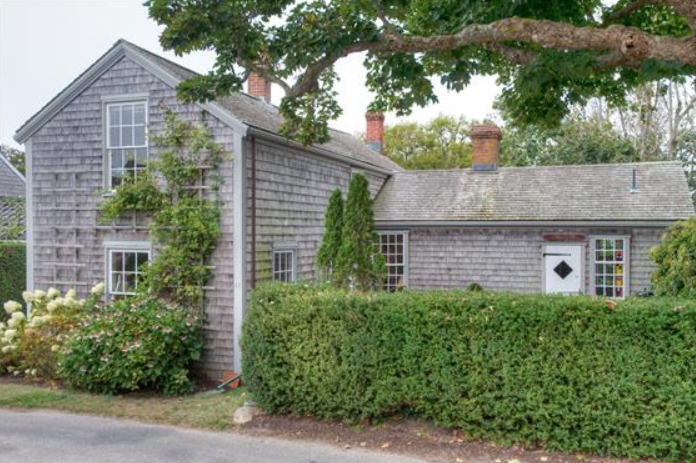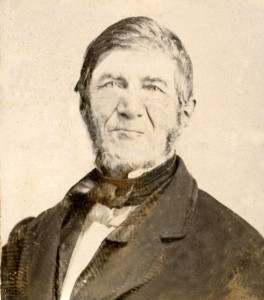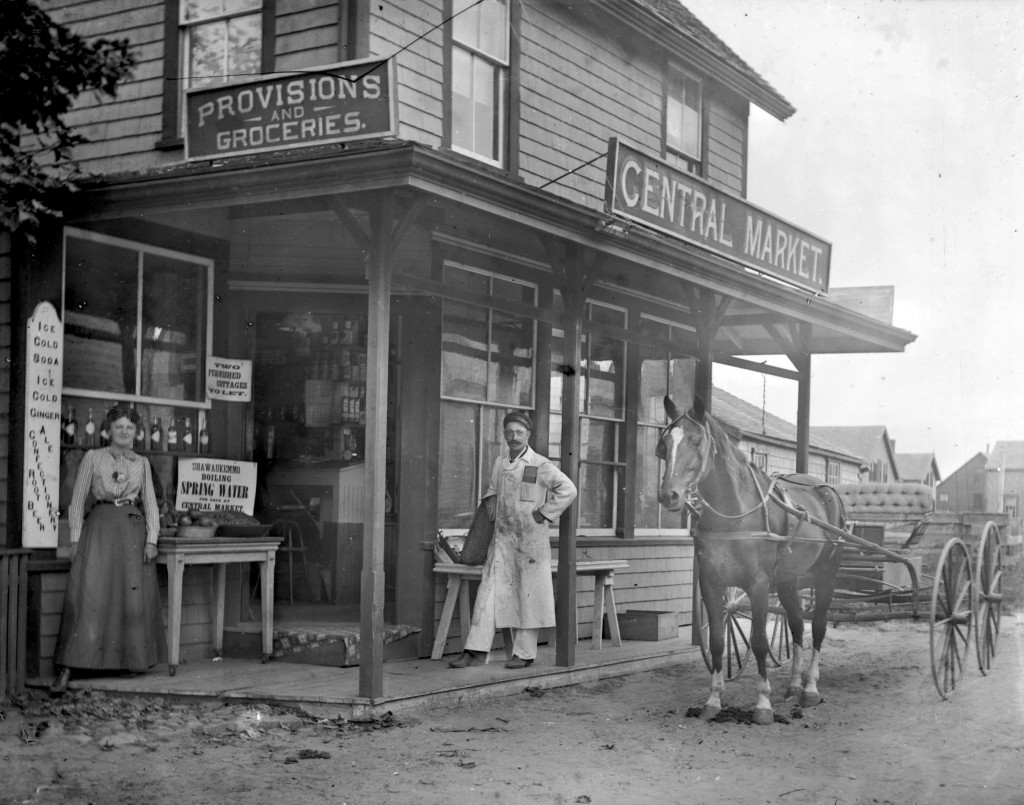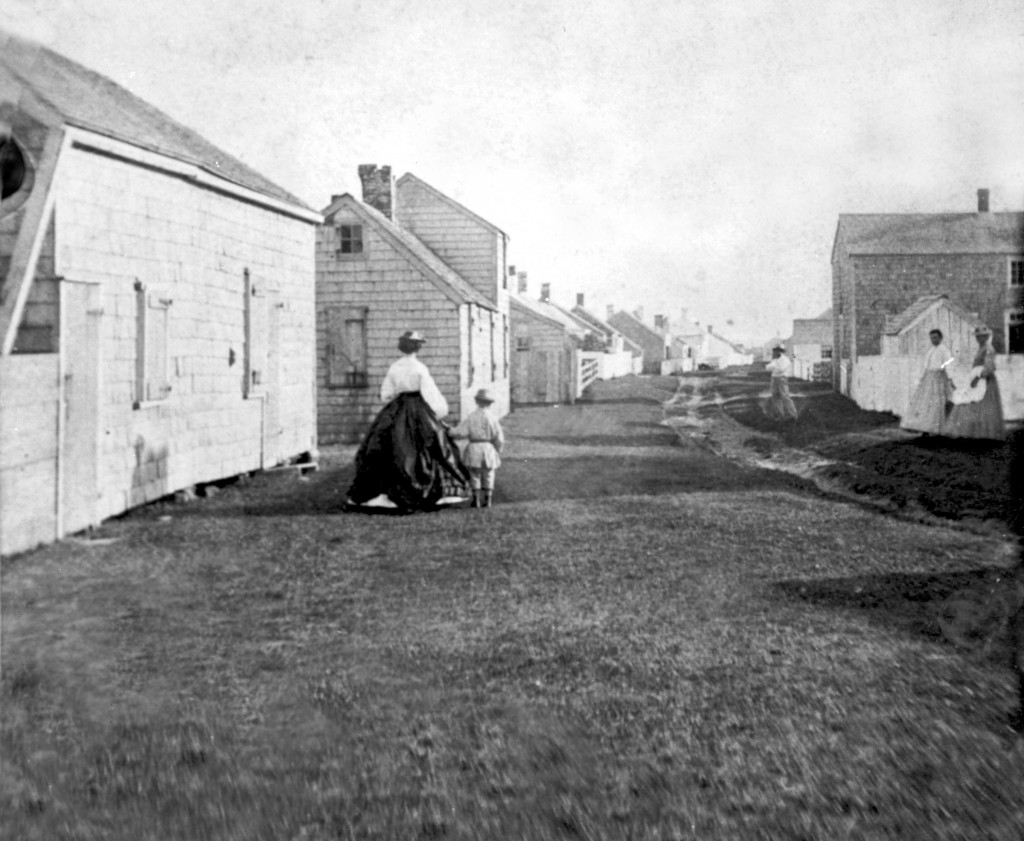
Researching the history of a house is like playing detective—you gradually piece together who owned a house and often discover fascinating facts–sometimes buried for a hundred years or more. On Nantucket, this research is rarely boring; you can almost be certain the past owners’ lives will be linked to the events in the island’s rich history.
As the island anticipates the release of the movie based on Nat Philbrick’s In the Heart of the Sea, I thought I would share the history of one house touched by the Essex tragedy.
The cottage known as Felicite in the heart of ’Sconset is one of the seasonal fishing retreats built for Nantucketers in the eighteenth and early nineteenth centuries. Its name goes back to at least 1888, when the Inquirer and Mirror referred to it as “Felicite Cottage” in a list of the cottagers at Siasconset. Felicite is of Latin and old French origin and means blissful, fortunate, and happy (as in happy in marriage). Edward Underhill, who in the 1880s compiled early histories of the cottages, stated that John Emmett (1772–1824) owned Felicite by 1814. However, it was not until 1835 that the first record of the property is found. This record—a town survey of the village—notes the owner’s initials “IF”, for Isaac Folger (1773–1842).
Folger was married to Love Pinkham (1775–1861), whose brother owned an adjoining cottage—San Souci. Folger’s account book documenting the years 1797–1802 indicates he was a jack of all trades—a boatbuilder, wheelwright, carpenter, and grocer. In 1842, the property passed to Isaac and Love Folger’s daughter, Ruth Folger Brown (1805–77), whose husband John A. Brown (1803–56) sold the property to Benjamin Lawrence (1799–1879) in 1847.
Lawrence, who held the cottage for twenty-seven years, was one of only eight survivors of the ship Essex, which sailed from Nantucket on August 12, 1819, and was sunk by a whale in the South Pacific on November 20, 1820. A twenty-one-year-old boatsteerer at the time, Lawrence was one of three men rescued after a grueling 90 days by the British ship Indian. Accounts of the tragedy credit Lawrence with saving his whale boat—one of three used to rescue the crew—by volunteering to dive below to clinch the nails used to fix a hole with a new board.

Through researching his life, it becomes apparent there were early events in Lawrence’s life that likely gave him the strength and skills to survive. Lawrence was the eldest son of James and Jedida Lawrence of Nantucket, born on February 25, 1799. At the age of ten, his father and sister Sally were lost at sea on “a voyage to Alexandria” as reported in the Barney Genealogical Record. One month later, his mother gave birth to triplets—all three surviving to adulthood. As the eldest child of three other siblings besides the triplets, Benjamin would have helped manage a large household and probably grew up quickly. It likely gave him the skills to manage others and take care of himself.
After his Essex voyage, Lawrence married Elisabeth Pitman (1806–1900) and they had six children, born between 1825 and 1851. Like other survivors of the Essex, Lawrence returned to the sea. He went to Hudson, New York when a whaling port was established there, and between 1832 and 1836 was in command the ship Huron of that port. He later was captain of the ship Dromo of Nantucket.
Upon his retirement, Lawrence became the keeper of Nantucket’s Asylum for the Poor, caring for fifty or more indigent individuals and probably helping to oversee the construction of a new building now known as Our Island Home. His obituary notes: “his sturdy virtues commanded the esteem of all who knew him, and he leaves behind the best possible record—that of an honest man doing his whole duty.”
Lawrence’s later life was not without tragedy. In 1849, his eldest son Robert was lost at sea off Cape Horn—at the same age as Benjamin was during his Essex experience.
Only a few records of his life in ’Sconset have been found. His obituary notes “since retiring from the sea, he had employed himself busily in farming, fishing, and other pursuits, residing a portion of the time in Siasconset.” In 1859, Lawrence advertised a “fish boat and hay for sale” in his barn at Siasconset, and in May 1874, he advertised his “house for sale with good barn”.

that was once part of the Lawrence property, c. 1880 (photo credit: Nantucket Historical Association)
Lawrence sold the property that year to Elizabeth Mitchell McCleave (1820–85), wife of Captain Charles McCleave (1818–90). The McCleaves retained the property until 1889, when Captain McCleave sold the cottage and barn to Richard E. Burgess, a grocer. The barn, located on what is now an adjoining property, was altered by the addition of a new structure—the assistant light keepers’ house at Sankaty Head lighthouse—that was moved to the site to become Burgess’s Central Market.
The small cottage evolved over the years—including the addition of a two-story wing that Underhill notes was added about 1868 (during Lawrence’s ownership). It is not known who named the cottage, but I like to think the name Felicite was given to the house by Lawrence—realizing he was lucky, fortunate and hopefully happy.
-Michael May
mmay@nantucketpreservation.org
(This article was originally written for the column “A House Genealogy ” featured in the Mahon About Town E-Newsletter – Click here)



